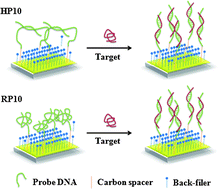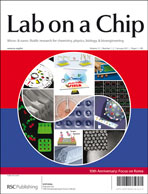Analysis of DNA hybridization regarding the conformation of molecular layer with piezoelectric microcantilevers†‡
Abstract
Lead Zirconate Titanate (PZT)-embedded microcantilevers were fabricated with dimensions of 30 × 90 × 3 μm3 (width × length × thickness). A thicker PZT layer improved the actuation and enabled long-term data acquisition in common aqueous

- This article is part of the themed collection: 10th Anniversary Issue: Korea

 Please wait while we load your content...
Please wait while we load your content...